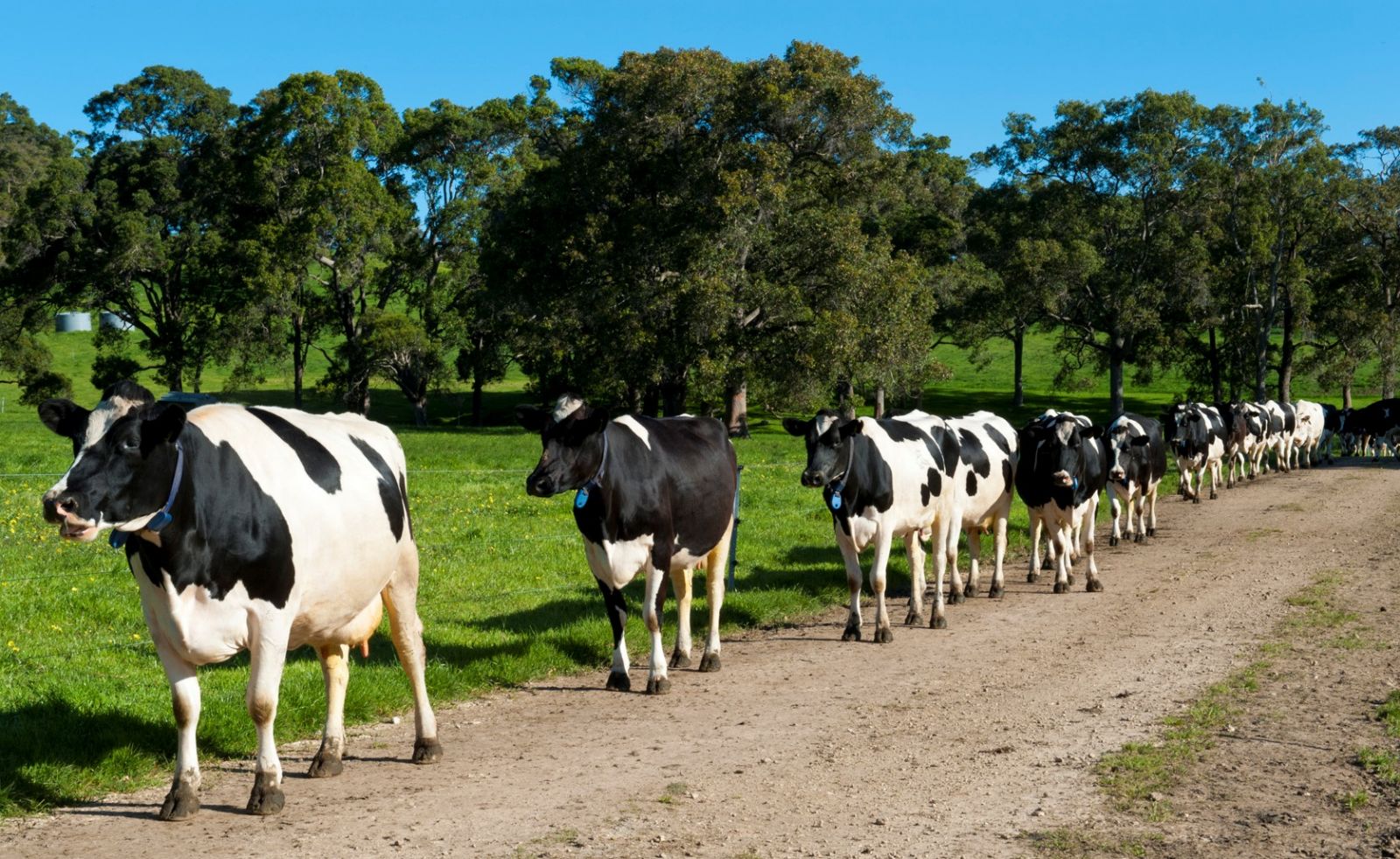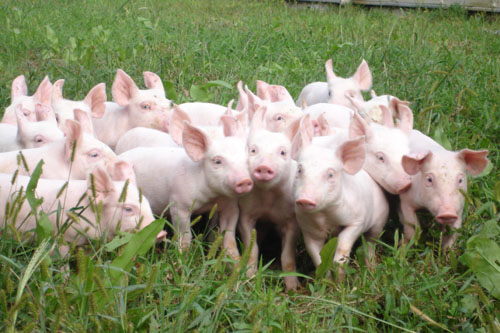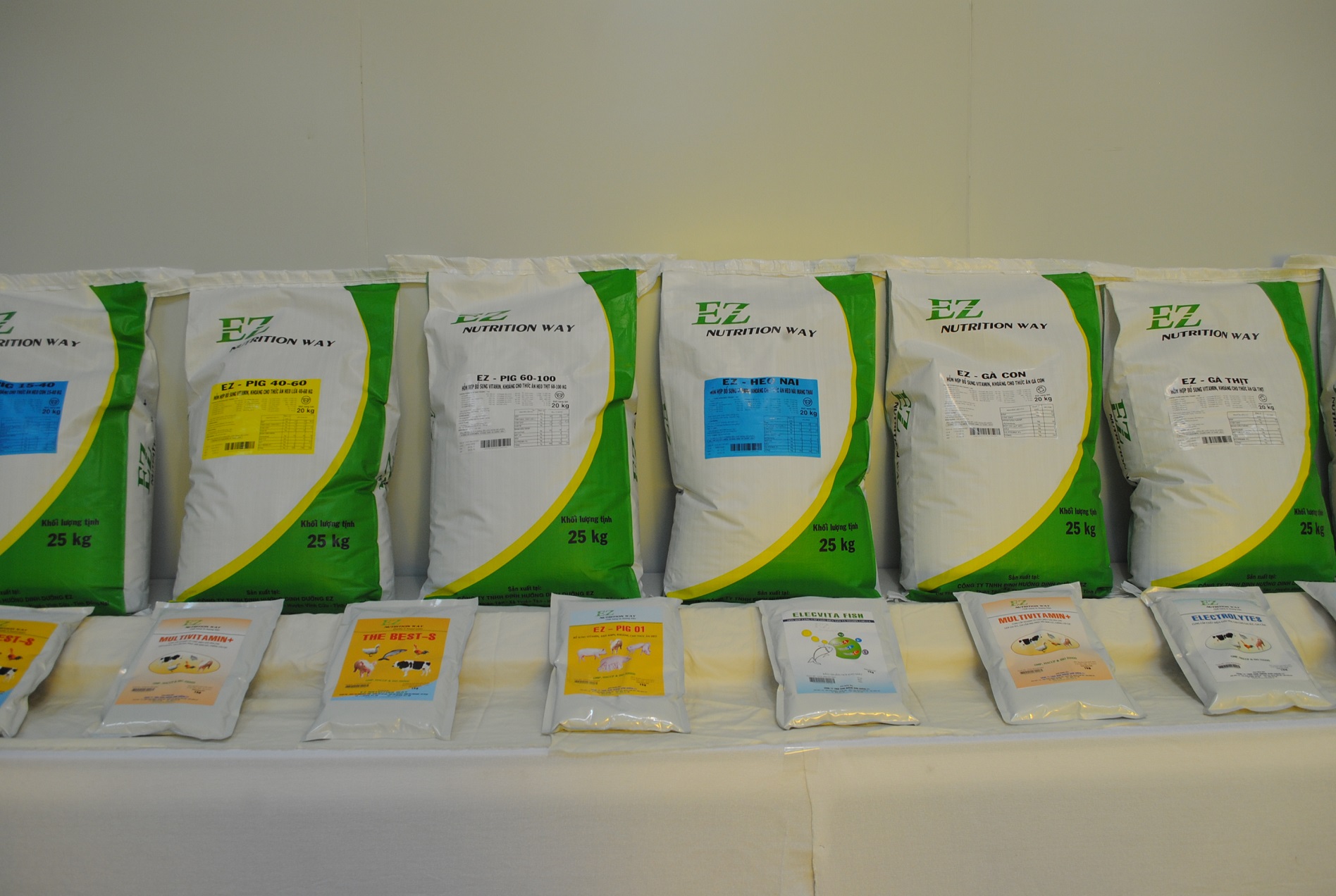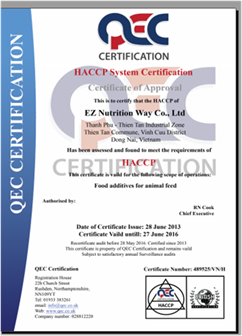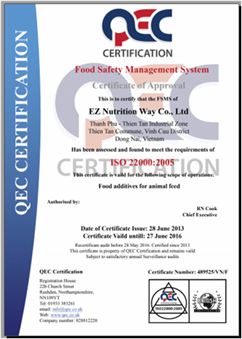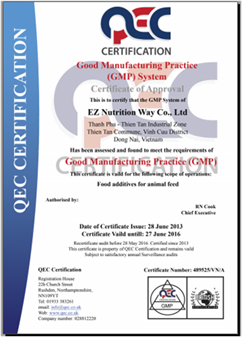Probiotics: Concepts (Cont)
Activities of probiotic bacteria:
In general, probiotics can improve conversion, decrease mortality, stimulate the immune response and protect against enteric pathogens (Siragusa, 2012).
Probiotics perform these activities with a higher or lower intensity depending on the environment. All bacteria produce enzymes to breakdown long carbohydrates, proteins, and fats to use them as source of energy or as structural compounds in their reproduction. The probiotic bacteria do the same once inside the animal; these prokaryotes excrete enzymes that benefit the animal, as the feeds are predigested. Many of the bacteria species used in probiotics are also used (different strains) to produce enzymes (B. amyloliquefaciens) (EC, 2012).
Besides, bacteria must ferment carbohydrates to obtain energy; many probiotic bacteria ferment the carbohydrates following the lactic acid path producing lactic acid as final molecule. This lactic acid is produced directly in the intestinal lumen (Ljung, 2006), and has a positive effect on the lactic flora (Kaupp, 1925). Once the probiotic bacteria are active, degrading the media and increasing their population, they tend to stabilize their population. Some bacteria increase their counts very rapidly in the GIT, avoiding the attachment of other (pathogenic) bacteria, this is called competitive exclusion. Some others may excrete bacteriocines, natural antibiotics that are able to control the growth of other bacteria. The probiotic bacteria produce these enzymes in order to dominate the environment in which it is, but does not affect negatively to the autochthonous flora of the animal.
Lastly, the gut microbiota affects significantly the animal immune system (Corthesy, 2007; Herich, 2002; Klasing, 2007; Ljungh, 2006; Siragusa, 2012), for example, in animals challenged with a necrotic enteritis model, Jerzsele found a higher level of interleukin 1-β (Jerzsele, 2011).
Because of all these effects, the probiotics are able to help the animals growing more efficiently and reducing the mortality in the flocks, improving the benefits of the producer.
Effects of probiotics on animals:
Probiotics improve feed conversion ratio of broiler chickens and piglets; these effects have been evaluated by the European Union in the cases where the probiotics are registered for its use in animal nutrition there. They also improve the vitality of the animals (Mallo, 2010). The normal reductions in mortality of animals in the field trials are always between 3 and 5 percentage points (Mallo, 2010). This enhancement of the vitality is probably explained by the better immune system observed in animals receiving the probiotic, and less affection by pathogenic bacteria.
In the case of piglets, the addition of certain amount of bacteria (probiotic) to the feeds, helps the animal in the adaptation to solid feed (at weaning), and through all the changes of feeds that they face during their life, attenuating the adverse effects that use of by-products and changes in nutrient composition of the diets bring with them.
As an example, Bacillus amyloliquefaciens CECT-5940 is one of the strains approved in UE and used as a commercial probiotic in dosages of 5 x 105 to 106 CFU/g of broiler feed and 5 x 105 CFU/g in laying hens feed.
B. amyloliquefaciens is administered as spore to the animal, and it can endure the pelleting process (Table 3); this, together with the compatibility with acids, antibiotics and anticoccidials (Table 4; compatibility considered when counts are not decreased more than 1 log), makes the product easy to handle.
Table 3.- Bacterial counts before and after pelleting at 90ºC
|
CFU/g of feed before pelleting |
CFU/g of feed after pelleting |
|
2.60 x 106 |
2.25 x 106 |
|
1.68 x 106 |
1.50 x 106 |
|
1.27 x 106 |
1.16 x 106 |
Table 4.- Compatibility of B. amyloliquefaciens probiotic with antibacterials
|
Antibacterial |
CFU/g before contact with antibacterial |
CFU/g after 24 hours in contact with antibacterial |
|
Acetic (1 g/kg) |
1.02 x 106 |
5.65 x 105 |
|
Formic (1 g/kg) |
9.67 x 105 |
5.50 x 105 |
|
Propionic (1 g/kg) |
7.31 x 105 |
4.92 x 105 |
|
Chlorphenicol 10% (2 g/ kg) |
1.41 x 107 |
1.23 x 107 |
|
Enramycine 4% (0.5 g/kg) |
0.73 x 107 |
0.6 x 107 |
|
Zinc bacitracine 10% (2 g/kg) |
1.39 x 107 |
0.91 x 107 |
|
Neomycine sulphate |
1.55 x 107 |
1.14 x 107 |
Once inside the animal, with optimum moisture and nutrient conditions, the spores germinate, and begin to exert their benefits:
This prokaryote excretes enzymes, mainly proteases and amylases, benefiting the animal as can be seen in tables 5 and 6.
Table 5.- Effect of probiotics on protein, fat and starch digestibility (at
42 days of age) (Sánchez, 2006)
|
Treatment |
Protein digestibility (%) |
Fat digestibility (%) |
Starch digestibility (%) |
|
Control |
70.8 |
75.4 |
84.2 |
|
B. amyloliquefaciens (106 CFU/g of feed) |
76.5 |
80.9 |
87.4 |
|
P |
P<0.0001 |
P<0.02 |
P<0.05 |
Table 6.- Effect of probiotics on dry matter (DM), fat (EE), organic matter (OM) and ash digestibility (at 42 days of age) Mountzouris, 2010)
|
Treatment |
DM digestibility (%) |
EE digestibility (%) |
OM digestibility (%) |
Ash digestibility (%) |
|
Control |
70.3 |
65.0 |
71.9 |
37.6 |
|
Multistrain probiotic (105 CFU/g of feed) |
74.8 |
71.0 |
74.0 |
49.6 |
|
P |
P<0.05 |
P<0.002 |
P<0.001 |
P<0.001 |
Besides, ferment carbohydrates following the lactic acid path, producing lactic acid in the intestinal lumen. In an in-vitro test it was observed that 1 gram of B. amyloliquefaciens could produce 1,8 g of lactic acid in 1 hour if sugar is available in the environment. At the same time, B. amyloliquefaciens produce a bacteriocine called barnase, a ribonuclease that inhibits the growth of pathogenic bacteria. The combination of these effects control the intestinal population (Table 7).
Table 7.- Effect of a B. amyloliquefaciens probiotic on lactobacilli and E. coli populations at 7 and 42 days of age (broilers) (Mallo, 2010)
|
|
Control CFU/g |
B. amyloliquefaciens CFU/g |
Difference |
Significance |
|
Lactobacilli: Day 7 Day 35 |
8.14 x 108 2.46 x 108 |
1.73 x 109 5.45 x 108 |
+113% +122% |
P<0.05 P<0.05 |
|
E. coli: Day 7 Day 35 |
5.74 x 107 1.56 x 107 |
2.94 x 107 9.74 x 106 |
-49% -38% |
P<0.05 P<0.16 |
Because of all these effects, the probiotic based on spores of B. amyloliquefaciens CECT-5940 improves feed conversion in broilers. This effect has been evaluated by the European Union, approved and registered as number 4B1822, enhancer in broiler production. It also improves the vitality of the animals, probably by strengthening the immune system of animals and less involvement of pathogenic
bacteria.
The effectiveness of this probiotic was evaluated in a meta-analysis that included 10 farms, with a total of 2.24 million chickens. The probiotic was added at a dosage of 1Kg/Ton. The feed was presented in pelleted form and analyzed for concentration of probiotic, verifying that the pelleting process had not affected the concentration of bacteria in the final feed. In 9 farms the control data were earlier production data, and were compared to the results with the probiotic in the feed.
In one of the farms, 3 buildings (with 10,000 broilers each) received control feed while other 3 received feed with probiotics, at the same time. Data were analyzed for homogeneity, pooled and combined in the meta-analysis. The parameters analyzed were final weight (kg), feed conversion (feed / gain) and mortality (%) for the entire period. The results are shown in Table 8. It was concluded that the tested probiotic improves feed conversion and reduces mortality in farms (Mallo, 2010).
Table 8. - Effect of a B. amyloliquefaciens probiotic on broiler production; a Meta-analysis (Mallo, 2010)
|
|
Control |
B. amyloliquefaciens |
Difference |
P<F |
|
Final Weight (kg) |
2.632 |
2.678 |
+1.7 % |
0.37 |
|
FCR |
2.01 |
1.95 |
-3.0% |
<0.05 |
|
Mortality (%) |
8.3 |
5.3 |
-36.1% |
<0.0001 |
Timmerman developed a multi-strain probiotic preparation in fluid form that consisted in 7 lactobacillus strains. When he tested it in the field, he observed an increase in body weight and a decrease in mortality (Table 9) (Timmerman, 2006).
Table 9. - Effect of a multi-strain chicken-specific probiotic on broiler
production; a Meta-analysis (Timmerman, 2006)
|
|
Control |
Probiotic |
Difference |
P<F |
|
Final Weight (kg) |
1.978 |
2.003 |
+1.2% |
0.18 |
|
FCR |
1.66 |
1.67 |
+0.6% |
0.11 |
|
Mortality (%) |
7.14 |
3.81 |
-46% |
0.19 |
In a different test, the probiotic spores compound B. amyloliquefaciens were compared with a negative control and two different probiotics: a probiotic made of a lactic acid bacteria, Pediococcus acidilactici and another one formed by Bacillus subtilis spores. This trial lasted 38 days and used a total of 2078 Ross PM3 chickens, with an average weight of 40.5 g at the beginning of the trial. The animals were housed in a clean and disinfected poultry belonging to the experimental facilities of the company UFA AG in Switzerland. The chickens were allocated into 16 pens with 130 animals each (50% males and 50% females). Each treatment including the control, had 4 replicates.
Table 10.- Effect of different probiotics on broiler performance
|
|
Control |
B. amyloliquefaciens |
P. acidilactici |
B. subtilis |
P<F |
|
Final Weight (kg) |
2.133 |
2.157 |
2.156 |
2.126 |
0.57 |
|
FCR |
1.747 |
1.728 |
1.739 |
1.736 |
0.55 |
|
Mortality (%) |
2.12 |
0.77 |
2.31 |
0.96 |
0.43 |
|
Production Index |
320 |
331 |
324 |
325 |
0.41 |
There were no statistical differences between the treatments, but, remarkably, all probiotics improved the final body weight of the control, reduced the feed conversion ratio, and, even in a very controlled environment, the sporulated probiotics were able to reduce the mortality. The probiotic composed of spores of B. amyloliquefaciens was the one that obtained the best numerical results.
As B. amyloliquefaciens is compatible with antibiotics, it improves the results obtained with AGP, as has been seen in a trial run in Bar Magen experimental farm in 2012 (Gutiérrez, 2013). The trial investigated the effects on growth performance and dressing parameters when a B. amyloliquefaciens probiotic (109 CFU/g of product) is added to a broiler standard feeding program. Three treatment groups were established: (C) a negative control diet, (AGP) the control diet supplemented with AGP (Flavomycin 10 g/T of feed) and (P+AGP) the control diet supplemented with AGP and B. amyloliquefaciens (B. amyloliquefaciens 1000 g/T + Flavomycin 10g/T). 576 Ross 308 broilers were housed in 18 pens and monitored from day 1 to 42 of age for differences in performance parameters. Results can be seen in table 9: The body weight in P+AGP group (3002 g) tended to be higher than in groups C (2837 g) and AGP (2883 g). There were no significant differences between the groups in feed intake. The P+AGP group (1.68) had significantly better FCR compared to FCR of groups C (1.78) and AGP (1.76). Animals of the P+AGP group (380) tended to have a better Production index (Body Weight, Feed Intake, FCR and Mortality) than animals of the groups C (351) and AGP (359). At the end of the trial, 10 birds with the same weight from each treatment were euthanized to evaluate dressing performance: The dressing percentage was significantly (P= 0.013) higher in broilers from the P+AGP group (73%) than in those from groups C (70.5%) and AGP (71.4%). There was a tendency (P< 0.06) to have heavier breast weight percentage when receiving P+AGP group (21.3%) than when receiving the C (19.6%) or AGP (20.3%) treatments.
Table 11.- Effect of a combination of antibiotic and a probiotic on broiler
production (Gutiérrez, 2013)
|
Treatment |
Final Weight (kg) |
Feed Intake (g) |
FCR |
Mortality (%) |
Production Index |
|
Negative Control |
2.837b |
5.041 |
1.78a |
4.2 |
351b |
|
Positive Control |
2.883ab |
5.083 |
1.76a |
3.6 |
359b |
|
B. amyloliquefaciens + AGP |
3.002a |
5.040 |
1.68b |
4.2 |
380a |
|
P- Value |
0.06 |
NS |
0.02 |
NS |
0.11 |
According to these results, it is concluded that the addition of a probiotic together with AGP not only did not show contra indications between the combination of both products but also produced a synergistic effect, leading to better body weights, FCR, production index, dressing percentage and breast weights in animals fed with Probiotic + AGP than those fed only with AGP.
The B. amyloliquefaciens probiotic has very good effects also in laying hens at a dosage of 500 grams/ton of feed (5x105 CFU of B. amyloliquefaciens/g of feed). It improves albumen quality and egg shell quality, as was demonstrated in a trial run in India, with a total of 2640 layers, of 66 weeks of age at the beginning of the trial, separated in 30 groups of 88 animals each (Table 10). The trial lasted 8 weeks.
Table 12.- Effect on laying hens (Rama-Rao, 2012)
|
|
Control |
B. amyloliquefaciens |
Difference |
|
Laying % |
86.03 |
85.56 |
-0.54% |
|
Feed intake (g/hen&day) |
109.2 |
110.2 |
+0.91% |
|
Egg mass (g/hen&day) |
59.34 |
59.45 |
+0.18% |
|
Egg without shell % |
0.068 |
0.056 |
-17.64% |
|
Haugh Units |
77.84 |
80.11 |
+2.91% |
|
Egg Shell Thickness (mm) |
0.367 |
0.447 |
+21.79% |
|
Egg Shell strength (N) |
8.208 |
10.130 |
+23.41% |
|
Egg Shell weight (%) |
8.780 |
8.864 |
+0.95% |
Values in italics mean P<0.10
Although there were no big differences in laying %, the egg mass per animal and day was higher, and also, the Haugh units, that are an indicator of the albumen density tended to be higher in the eggs laid by the animals that received the probiotic than in the control group animals; besides the parameters regarding the egg shell quality were all better than in the control group.
Conclusions:
The nutritionist must always keep in mind how to control the intestinal health of the animals, as if it is not good, the animals will not be able to use the nutrients efficiently. The stability of the gut microbiota is key to control intestinal health. The use of probiotics as gut flora stabiliser is a recognized tool to achieve that objective, as the probiotics interact with other bacteria and control them (reducing the mortality of the animals). If these probiotics, besides, interact with the host by producing lactic acid, or enzymes, then the animal not only has a better intestinal health, but can digest better the feed, and hence, improve their FCR.



